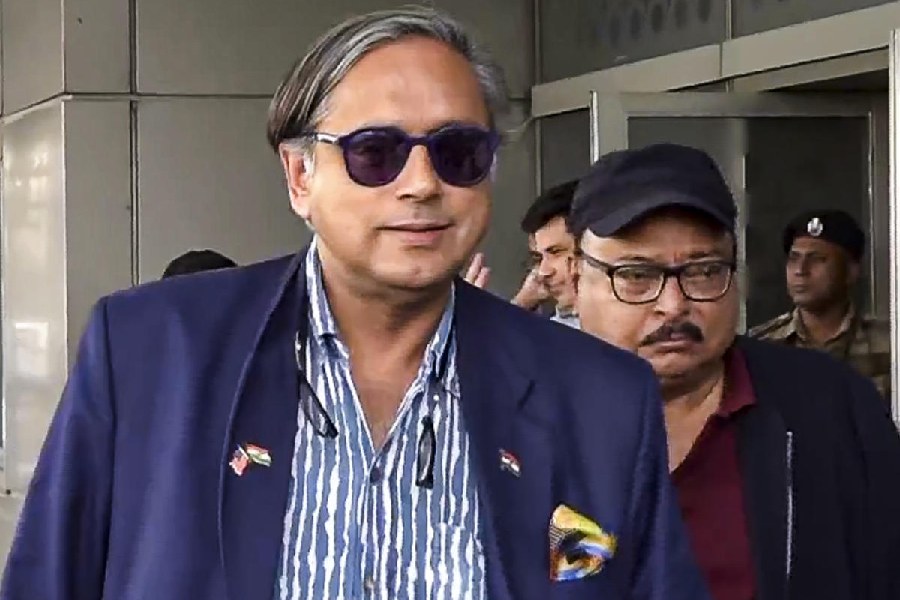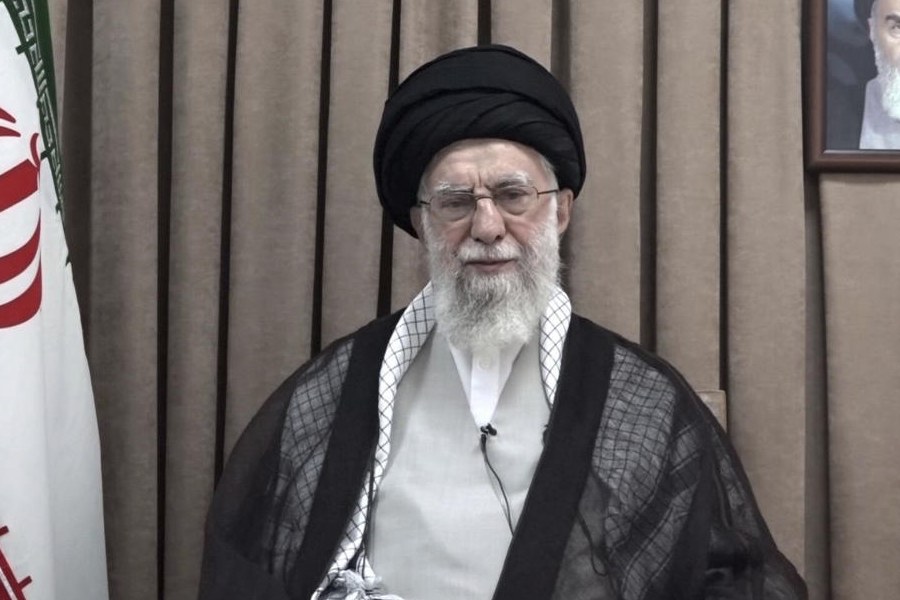.jpg)
Give me blood and I will give you freedom!” Salt Lake recently hosted a 90-year-old Azad Hind Fauj soldier who changed the course of her life in the 1940s after Netaji Subhas Chandra Bose spoke to her this immortal line.
Saraswathi Rajmani was born in Rangoon, in the lap of luxury, but gave it all up to fight for India’s freedom. Moved by Netaji’s vision, she joined the Indian National Army (INA) as a teenager, served as a spy, got shot but lived to tell the tale, only to be shunned to oblivion after independence.
But a ladies group — Salt Lake Abhivyakti Mahila Samity — chanced upon her and flew her down from Chennai, where she had settled. The ladies would be celebrating their annual function by enacting tales of two lesser-known female freedom fighters – one of them Rajmani – and was overjoyed to learn that the former soldier was traceable and could join them for the show.
Rajmani attended the show, flew back, but suffered a heart attack and passed away afterwards on January 13, two days after her 91st birthday and 10 days before the 121st birth anniversary of her idol. The Telegraph Salt Lake recounts what may have been her last interview.
Price of freedom
The CB Block hall had thundered with cries of “Jai Hind!” when Rajmani walked in, helped by volunteers. The ladies group would be felicitating her at CB 54 a day before their function and the hall was packed with people sitting, standing and even peeping through doors and windows for a glimpse of the national heroine.
Rajmani was in uniform. “Netaji would ask us to attend all public meetings in uniform and to greet everyone with Jai Hind,” she said, her voice feeble but spirit dauntless. “I still follow his words to the T. People say I’m mad to be wishing Jai Hind 70 years after independence but then they are all born in free India. They don’t know what it took to attain this freedom,” she said.
Scores of people queued up to garland Rajmani, seek her blessings and click pictures with her. And then the lady recounted her story.
Christened by Netaji
“I was born in 1927 to a family that owned gold and tungsten mines in Rangoon. My birth name was R. Rajmani. We led a luxurious life till one day I saw a poster on a wall. It had a picture of Netaji asking people to donate money for the INA. I was in my teens but was aware of the atrocities by the British and about Netaji’s army,” said Rajmani in a mix of English and Hindi.
The girl rushed home, took all her ornaments and emptied them in the donation box. The next morning, Netaji himself arrived at her doorstep. “My father was well-known in Rangoon and Netaji thought I had given such precious jewels my mistake. He had come to return them to my father but I refused.”
It was then that Netaji told Rajmani he needed something even more valuable than jewels. “If I really wanted freedom, he told me, I would have to spill my blood,” recounted Rajmani, with a sudden with vigour in her voice and a twinkle in her tired eyes. “I stepped forward without batting an eyelid. There and then, I joined the Azad Hind Fauj.”
Seeing the grit and determination in the girl, Netaji christened her Saraswathi. From then on she was known as Saraswathi Rajmani.
.jpg)
She took a bullet for us
Rajmani’s first job in the INA was that of a nurse. But she once spotted some people lurking suspiciously around their clinic. “In an hour we got bombed,” recalled the lady, who seemed disoriented at times but who narrated the tale like it happened yesterday. “I later shared this with Netaji and he managed to catch the informers.”
Thereafter Netaji assigned Rajmani to be a spy in the British high commission. “I went by the name of Mani Chaprasi. Netaji asked if I, being such a well-to-do girl, was all right living the life of a sweeper but I told him I would be fine.” She went on to pass several important messages that saved INA and Japanese soldiers from British attacks.
But one day Rajmani, and another spy, got caught in the act. The British started firing and Rajmani took a bullet in her right leg. “Somehow, the two of us managed to escape into a forest. We climbed a tree and hid up there for four days before limping back to the INA camp,” said Rajmani, exhausted from all the talking.
Shunned after independence
Once the INA disbanded and India gained independence, Rajmani’s family fell on hard times. “We had to move to Chennai but the Congress always kept a close watch on us former INA soldiers. In the airport they confiscated my most prized possession – a letter that Netaji had written to me from Imphal,” said Rajmani, breaking into tears. “They thought it had coded messages.”
Her family sought help from the government and individuals but “no one gave us even a drop of water. I decided never to ask anyone for anything again. With Netaji’s name on my lips, I took to the only other skill I had, sewing, to make a living.”
The government didn’t acknowledge Rajmani as a freedom fighter till 2004, after which she finally started receiving pension. Then in 2005 she received a flat from the Jayalalithaa government.
“But she gives all her pension money away,” said S. Thara, whom Rajmani had adopted as a child in 1978 and brought up. Thara had escorted her peri amma or “elder mother” to the city. Thara is now a schoolteacher and mother or two.
Life story on stage
The next day the ladies club staged a skit on Rajmani’s story. Her role was played by Shivani Patodia as a child, her mother Nilima Patodia in youth and Uma Saraf as a senior citizen. Incidentally it was 10-year-old Shivani who had traced Rajmani in the first place.
“When I was given this role I Googled my character for reference. Turned out that she was alive and lived in Chennai,” said Shivani, who studies in Class V and lives in BJ Block.
The ladies were overjoyed at the news and her grandmother Saroj Patodia then took over. “My daughter lives in Chennai and so I went over to look for Rajmani ji,” said Patodia, who had played the role of Netaji in the play. “From the net we found the locality she lived in but it was a mammoth task finding her house. Her neighbours, nearby shops or even the local police station had absolutely no knowledge that such a great lady lived among them!”
Rajmani’s house, it seems, was full of Netaji’s posters and statues and she always wore his badges. “When she came to Salt Lake we took her to the Netaji statue at Central Park and was overwhelmed with devotion. It was as if she was looking at her god,” said Pratibha Khandelwal, who had also scripted and directed the play on her life.
During her stay in Salt Lake Rajmani was put up at CL 122, at member Nilima Bhargav’s house. “It was an honour to be able to serve her. She was a lovely house guest and I had grown very fond of her,” said Bhargav, who ironically essayed the role of the British officer who shoots Rajmani in the play.
The women had also staged a play on Azizun Nissa, a courtesan turned freedom fighter, essayed by Sarika Varshney. “In the short time that she spent with us, Rajmani ji inspired everyone,” said Varsha Daga and Meena Singh, president and secretary of the ladies’ group.
INA at Republic Day parade
Rajmani passed away 10 days before Netaji’s birth anniversary this year but it is clear what her last wish was. “My message to you is that of unity,” said Rajmani, rubbishing the theory that Netaji died in a plane crash. “He would have been so sad to see his beloved country in the state it is today. Netaji ko sab bhool gaye…” she trailed and broke down.
But that wasn’t the case. “Netaji is my greatest idol and you are the closest to him,” said an earnest Amartya Dey, an audience member who had come all the way from Naktala to pay his respect.
Two members of the Bose family had been invited too - Chandra Kumar Bose (Netaji’s elder brother Sarat Bose’s grandson) and Rajyashree Chaudhuri (Netaji’s cousin sister’s descendant). Both felicitated Rajmani and spoke of the sacrifice of the INA soldiers. “2017 was the 75th anniversary of the INA’s formation and we have appealed to the government to install an INA memorial before Delhi’s Red Fort, where the INA soldiers’ famous Red Fort Trails took place,” said Bose. “We also want an INA float at our Republic Day parade next year. Six or seven INA soldiers are still alive and they deserve the respect of being the country’s first army.”

.jpg)









